Scott Hamilton – 22 December, 2017
The sociobiologist EO Wilson believes that insects, and not humans, created the first and most successful civilisations on earth. With its claustrophobic rooms and teeming streets, its division of labour, its intricate hierarchies, its elite living on surplus honey and its sacrificed workers, the beehive resembles a human city.
A producer for the television series Heritage Rescue asked me if I’d like to fly to Dunedin, and do an interview at Port Chalmers about a slave ship wrecked in a nearby bay. The local museum’s amateur staff had salvaged the ship, and were displaying its detritus - shackles, cannons, egg cups - like sacred relics.
I told the producer that I’d accept a free holiday to anywhere. On the flight south from Auckland I wore dark sunglasses, and puffed out my gut, and drank my free whiskies, and tried to pretend I was a rock star gone to seed in middle age. I looked out my window, saw snow on the Southern Alps, and imagined it was cocaine.
Dunedin was cold and lonely. In a recent piece for The Spinoff, Peter Newport described the uncanniness of his hometown on a Thursday night. Wandering alone through the streets around the Octagon, Newport has sometimes wondered whether a neutron bomb - a never-completed Cold War weapon that could melt humans with radiation, and yet leave buildings and vehicles intact - has been detonated above Dunedin.
I was as lonely as Newport on a Tuesday morning in the Octagon. I sat in a café sipping a spicy chai latte, and waited for someone else, anyone else, to arrive, and watched the sun umbrellas on the pavement outside shake like petals in a cold rainy wind.
I had been told that Dunedin’s builders were busy restoring the First Church of Otago. I put on my coat and walked a few hundred metres to have a look.
When Dunedin’s Presbyterian settlers landed at Dunedin in 1848 their spiritual leader was Thomas Burns. Burns was a nephew of the poet, but he preferred silence, prayer and penance to wine, women, and song. The settlers quickly improvised a weatherboard church, but gales from the harbour slipped inside, and yowled and whistled at Reverend Burns’ sermons. The stone church was finished in 1873. It is still Dunedin’s tallest building.
Men in hard hats were servicing Burns’ erection. Presbyterianism has often been called a sadomasochistic religion, a mandate for the receipt as well as the infliction of discipline and punishment, and the intricate metal scaffolding around the steeple resembled the chastity cage that a dominatrix places around the penis of a client.
*
At Port Chalmers museum I met Jasmine Togo-Brisby, whose ancestors were stolen from Melanesia by Australian slavers. She was wearing a huge gold earring in the shape of the word KANAKA. A year before I had walked into a darkened room on the top floor of Titirangi’s Te Uru gallery, and breathed in the sickening sweetness of the high pile of skulls, made from Queensland sugar, that Jasmine had left there. The installation was called Bitter Sweet. It was a tribute to and obituary for the thousands of Melanesians who created - who were forced to create - Australia’s sugar industry. I had to write a review for EyeContact to get the smell of Bitter Sweet out of my nostrils.
After the museum staff and the television cameras had lost interest in us, Jasmine and I drove out of Port Chalmers, around the edge of Otago harbour, where the ruins of ships—wrecked, or abandoned, or never finished—seemed to rise from mud and sand at every bend. I felt excited and sad. My pleasure at meeting Jasmine, at hearing her stories about art and history, was mixed up with the memory of the shackles that Port Chalmers’ museum had displayed so proudly.
We were looking for the remains of the slave ship that the museum’s staff had plundered. Their captions claimed that the ship was Spanish, was called the Don Juan, and had moved Chinese coolies; my research told me that it had been called the Rosalita, had flown the Peruvian flag, and had arrived at Callao, the port of Lima, on February the 3rd 1863, carrying one hundred and ninety-six captives from Rapa Nui.
At Carey’s Bay we parked and walked into the mud of a low tide. Two rows of splayed, sharp-ended timbers poked out of the mud. The wreck was at once pathetic and fearsome, like the ribcage of a legendary dragon. Was this the Rosalita, or another corpse?
As we walked over the ship’s bones I thought about Black Phoenix, the scorched wreck that Ralph Hotere dragged from the mud of Port Chalmers into an art gallery. So many of the greatest works of art are ruins.
*
Back in Dunedin the streets were still almost empty. A cold wind from the harbour, which might have delighted in harrying pedestrians, in pulling hats off heads and ruining hairstyles, had to content itself with blowing about chip bags, and crash landing pigeons on the Octagon’s lawn.
In 1890 Dunedin was New Zealand’s largest settlement; today it comes in sixth, behind Auckland, Christchurch, Wellington, Hamilton, Tauranga. Students and cruise ships help sustain the city.
I had watched a Norwegian cruiser float slowly towards the docks at Port Chalmers. It was huge and white and apparently aimless, like an iceberg. Now elderly couples began to ease themselves out of a bus that had taken them from Port Chalmers to the centre of Dunedin. They looked slowly at the empty streets around the Octagon, like astronauts about to venture into the ruins of some long-dead alien civilisation.
Jasmine and I walked through the windy streets, stopping at galleries, bookshops, bars. Inside Milford Gallery I found a painting by Michael Hight: Mount Hutt Station, made in 2014. A tractor rusted in a shed; other abandoned vehicles lingered nearby. In the distance, a mountain summit glowed with snow as cold as moonlight. Between the dying machines and the snow, beehives had been stacked in rows.
Michael Hight has been painting beehives for decades. He calls them ‘sculptural installations’, and drives through New Zealand looking for them. To make a living, a beekeeper needs hundreds of hives. Unless the apiarist owns an unusual amount of land, he or she will have to negotiate - with farmers, or lifestyle blockers, or the local council or the distant central government—to find places to leave hives. Once a piece of vacant ground has been colonised, the bees can be left alone, for weeks or even months, to work. The keeper stops by to check their health, and eventually to harvest honey. Michael Hight stops by to take photographs, and sketch.
Hight is fascinated by the hives he discovers in unpopulated, ruinous places. He is drawn especially to abandoned rail stations and yards, and the settlements trains once sustained.
In the 2010 painting Horopito Hight shows hives stacked beside several train carriages. The carriages have been separated from their track, and from the rest of their train. Spots of moss grow on them, like barnacles on abandoned boats.
A century ago modernist painters and poets celebrated the speed and efficiency of the train. It was the machine that could, in Marx’s words, ‘annihilate distance and time’, the harbinger of an era in which humanity would dominate, and perhaps replace, nature. Hight’s paintings show the train, and other weapons of modernity, being annihilated by time.
Paintings like Horopito and Mount Hutt Station lack people, but they say a great deal about our society. Today New Zealand’s frontiers are in its interior. The globalisation and privatisation of the economy in the ‘80s and ‘90s shut post offices and freezing works and railway yards and schools. Dunedin suffered badly, but it was in the remoter inland regions - in central Otago, in the King Country, in the upper Waikato - that neo-liberalism made apocalypses.
A few years ago I visited the King Country town of Ohura, which was once home to a railway yard, a coal mine, and a jail, but now lacks even a dairy or garage. Ohura was famous for its radical miners, its socialist railway men. During the Waterfront Dispute of 1951 Sid Holland sent troops to the town to thwart the local revolutionaries, and keep the line and the mine open.
By the time I visited Ohura, capitalism was collapsing of its own accord. The pillars of main street shops were falling onto the pavement; windows were smashed or boarded over. Only along the rail track, at the edge of Ohura, had new buildings appeared. Beehives had been stacked in rows, behind a wireless fence. They hummed steadily, like healthy power pylons.
*
Like the other insects, bees are our elders. One hundred million years ago they were building their first hives; fifty million years ago their cousins, the wasps, were manufacturing paper. The sociobiologist EO Wilson believes that insects, and not humans, created the first and most successful civilisations on earth. With its claustrophobic rooms and teeming streets, its division of labour, its intricate hierarchies, its elite living on surplus honey and its sacrificed workers, the beehive resembles a human city.
New Zealand has two indigenous bee species, but they produce relatively little honey. In 1839 the first exotic hives were landed, by Methodist missionaries in the Hokianga. Soon wild bees had colonised much of the Northland bush.
Again and again, humans have tried to annihilate insects. We have drained mosquito marshes, napalmed ant tunnels, sprayed DDT on forests. In the era of industrial farming, with its pesticide dosings, the destruction has become routinised.
A team of German scientists recently discovered that, in only thirty years, three quarters of the flying insects in their nation’s nature reserves had vanished.
Alarmed by the data from Germany, the New Zealand entomologist Mike Dickison improvised his own study. Dickison drove from Christchurch to Picton, and stopped every time a bug hit the windscreen of his car. In five hundred kilometres he killed thirteen insects. Dickison remembered going for drives with his parents in the countryside when he was a child, and recalled how quickly the windscreen and radiator of the family car became covered in bugs.
But in spite of all the carnage, insect civilisations are likely to outlive their human counterparts. Despite the chemicals and tar and concrete, billions of bugs still thrive on the average block of suburbia. Together, the planet’s ants weigh as much as its people.
In his poem ‘After the Alphabets’, WS Merwin imagines the self-destruction of humanity, and the persistence of insect civilisations. ‘I am trying to decipher the language of the insects’, Merwin writes. It is insects, and not humans, who have ‘the tongues of the future’:
their vocabularies describe buildings as food
they can instruct of dark water and the veins of trees
they can convey what they do not know…
the speakers are their own meaning in a grammar without horizons
they are wholly articulate
they are never important they are everything
Michael Hight’s paintings have the same quietly eschatological feel as Merwin’s poem. They show us a young and exhausted civilisation alongside an older, thriving order. Hight’s brushwork is meticulous, even pedantic, and his works teem with detail. It is as though he is determined to preserve what is doomed. Hight paints some of the most ruinous districts of New Zealand, places already abandoned by humans, but on the chilly and deserted streets that ran off the Octagon his images suddenly seemed like a prophecy for our cities.
I flew back to Auckland thinking about ruins. I could see the city’s rush hour traffic jams five minutes as my plane descended on Mangere. Twenty thousand cars sat on the southwestern motorway; in the late afternoon sunshine they glinted the scales of a great dragon.
As my wife drove us into the traffic, towards home, I noticed a new building site, a kilometre or so from the airport. A high fence, decorated with advertisements, had been thrown up to hide the workers and their work. Perhaps Aucklanders disguise building sites with fences and ebullient billboards because we are afraid of half-finished buildings. Roofless and rubble-strewn, an unfinished building is a premonition. It reminds us of the ruin that it will inevitably become.
Scott Hamilton
Recent Comments
Scott Hamilton
Thanks for your kind words Megan & Anne. I'm looking forward to seeing the paintings of Megan's mate Kushana Bush, ...
Anne Soegijo
One is so sadly accustomed to careless + colourless journalism - this was a lovely surprise, thankyou!
Megan Dunn
Beautifully written piece, Scott. Thanks.
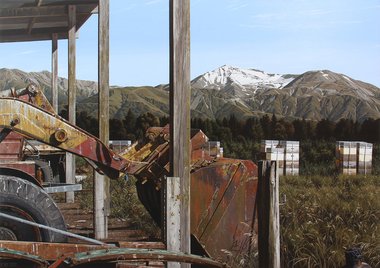
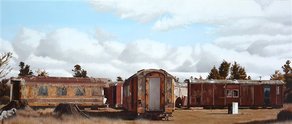

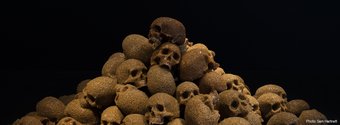
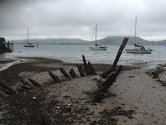
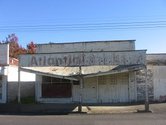
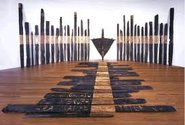
 Advertising in this column
Advertising in this column Two Rooms presents a program of residencies and projects
Two Rooms presents a program of residencies and projects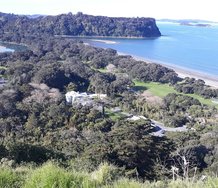
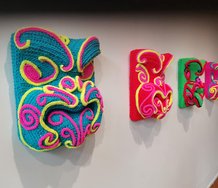


This Discussion has 3 comments.
Comment
Megan Dunn, 10:04 a.m. 24 December, 2017 #
Beautifully written piece, Scott. Thanks.
Anne Soegijo, 6:56 a.m. 25 December, 2017 #
One is so sadly accustomed to careless + colourless journalism - this was a lovely surprise, thankyou!
Scott Hamilton, 5:31 p.m. 27 December, 2017 #
Thanks for your kind words Megan & Anne. I'm looking forward to seeing the paintings of Megan's mate Kushana Bush, which are on display up the road at Te Uru. On the subject of NZ apocalypses, this recent & very strange work of conceptual art might be of interest, though I emphasise that I don't share its makers' eschatological urges: http://readingthemaps.blogspot.co.nz/2017/12/nuking-kaipara.html
Participate
Register to Participate.
Sign in
Sign in to an existing account.